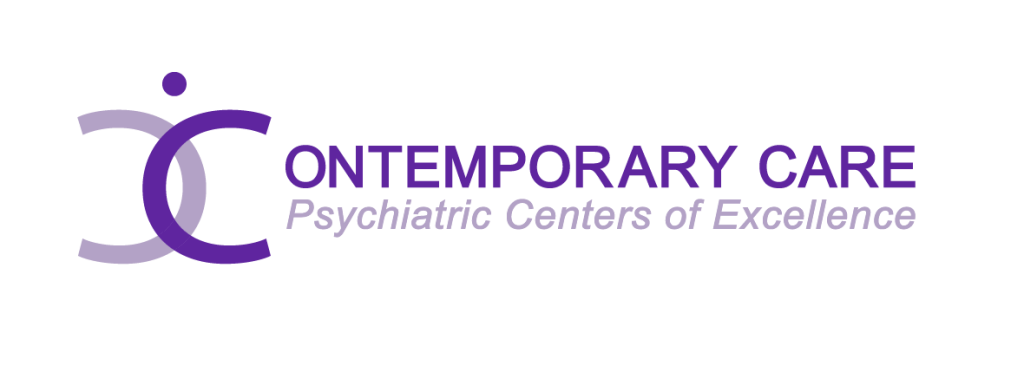Ketamine therapy has become a groundbreaking treatment option for those struggling with treatment-resistant depression. Unlike traditional antidepressants, which can take weeks to show results, ketamine therapy often offers relief in just hours. This rapid action has made it a popular choice among those who have not found success with other treatments.
However, despite its benefits, ketamine therapy is not without its side effects. Understanding these side effects is essential for patients considering this treatment. Knowing these will help them make informed decisions and integrate the right mental health care strategies into their lifestyles.
Table of Contents
Table of Contents
Key Takeaways
What Is Ketamine Therapy?
Why a Qualified Ketamine Therapy Healthcare Provider is Important
8 Common Side Effects of Ketamine Therapy When Using for Depression
- Dissociation
- Drowsiness
- Dizziness
- Nausea and Vomiting
- Increased Blood Pressure
- Slowed Breathing
- Suicidal Thoughts and Behaviors
- Risk of Misuse and Dependency
How to Monitor and Manage Side Effects with Your Healthcare Provider
Frequently Asked Questions
Take the Next Step with Ketamine Therapy at Contemporary Care Center!
| Key Takeaways ✔ Ketamine therapy can cause feelings of detachment or an “out-of-body” experience, often occurring during higher doses or initial treatments. ✔ The sedative nature of ketamine may lead to drowsiness, making it essential to rest after sessions and avoid activities that require alertness. ✔ The therapy can cause dizziness due to its impact on the central nervous system, particularly when transitioning from sitting to standing. ✔ Some patients may experience nausea, especially if sensitive to sedatives, though it can often be managed with light meals or anti-nausea medication. ✔ Temporary spikes in blood pressure may occur during sessions, usually mild but warranting caution for those with heart conditions. ✔ Ketamine’s sedative effects can slow breathing, emphasizing the need for a monitored medical setting during administration. ✔ Some individuals may experience a temporary increase in suicidal thoughts during the early phase of treatment, requiring close monitoring. ✔ Although rare under supervision, there is potential for misuse, especially in those with a history of substance abuse, making strict adherence to guidelines critical. |
What Is Ketamine Therapy?
Ketamine therapy involves administering ketamine, a medication initially developed as an anesthetic, in a controlled environment to help treat severe depression.
While traditional antidepressants work on serotonin or norepinephrine, ketamine therapy focuses on the NMDA receptors, which are part of the brain’s glutamate system.This mechanism aids in creating new neural connections, thus enhancing mood regulation and reducing depressive symptoms.
A clinical trial conducted by Massachusetts General Brigham involving 403 participants revealed that 55% of those treated with ketamine showed a sustained improvement in their depressive symptoms, with minimal significant side effects.
Ketamine remains a highly effective option for treating major depression, with more than 70% of patients experiencing a substantial reduction in depressive symptoms after just three infusions. This data underscores its potential as a rapid-acting solution for those with treatment-resistant depression.
Why a Qualified Ketamine Therapy Healthcare Provider is Important
When considering ketamine therapy, choosing a knowledgeable healthcare provider in Danbury, CT, is critical. This decision can significantly impact the treatment’s effectiveness and the patient’s safety.
- Choosing the Right Provider: A provider’s experience with ketamine therapy ensures that patients receive the appropriate dosage, reducing the risk of adverse reactions.
- Safety Protocols in Place: A qualified provider has strict protocols to monitor patients during sessions, ensuring that any side effects are addressed promptly.
- Customized Treatment Plans: Providers can tailor ketamine therapy sessions to a patient’s unique needs, adjusting dosage or frequency to maximize benefits.
- Questions to Ask:
- How many patients have you treated with ketamine therapy?
- What safety measures do you have in place during the sessions?
- How do you handle side effects if they arise?

8 Common Side Effects of Ketamine Therapy When Using for Depression
Ketamine therapy can offer life-changing benefits, but it is essential to be aware of the potential side effects. Here are eight common side effects of ketamine therapy and strategies how to handle each one:
1. Dissociation
Dissociation refers to a state where an individual feels disconnected from their thoughts, body, or surroundings. During a dissociative episode, patients might feel as though they are observing themselves from outside their body or that the world around them is surreal. Dissociation is one of the more frequent side effects of ketamine therapy, especially during higher doses or initial treatments.
Why It Happens
Ketamine therapy works by interacting with NMDA receptors in the brain, leading to alterations in perception and consciousness. This can induce a temporary dissociative state, which some patients describe as an “out-of-body” experience.
Managing Dissociation
Though dissociation can be unsettling, it is usually temporary and subsides as the effects of ketamine wear off. Therapy providers often create a calm and safe environment during ketamine therapy sessions, using dim lighting and soothing sounds to help patients remain grounded. Techniques such as deep breathing or focusing on physical sensations can also help patients manage these experiences.
2. Drowsiness
Drowsiness is a common side effect due to ketamine’s sedative properties. After a session, patients may feel extremely relaxed, leading to sleepiness or a strong desire to rest. Drowsiness typically lasts for a few hours following the session but may extend to the rest of the day in some cases.
Safety Precautions
Due to the drowsiness associated with ketamine therapy, patients are advised to plan for rest time after their sessions. It’s recommended to arrange for transportation home and avoid activities that require focus, such as driving or operating machinery. Resting in a quiet environment can help ease the transition from the sedative effects.
3. Dizziness
Dizziness occurs because ketamine affects the central nervous system, which can influence balance and spatial awareness. This can make patients feel light-headed or unsteady, especially when standing up too quickly after a session. Dizziness is fairly common, particularly in the first few sessions of ketamine therapy.
When to Be Concerned
While dizziness is generally mild and subsides on its own, persistent or severe dizziness should be reported to a healthcare provider. It could indicate the need for an adjustment in dosage or frequency of the ketamine therapy sessions.
Practical Tips to Reduce Dizziness
Patients can take measures such as staying hydrated, moving slowly when getting up, and sitting down if they feel unsteady. Healthcare providers may also recommend resting for a few minutes after standing to avoid light-headedness after the session.
4. Nausea and Vomiting
Nausea is a side effect that can occur during or after ketamine therapy sessions, particularly due to its impact on the body’s balance and gastrointestinal system. The dissociative effects of ketamine can create a sense of disorientation, leading to nausea or the urge to vomit. Patients with a history of motion sickness or sensitivity to sedative medications may be more prone to this side effect.
Preventive Measures
To minimize the risk of nausea, patients can opt for light meals before their ketamine therapy sessions. Additionally, providers may administer anti-nausea medication to help those who are particularly sensitive. Breathing exercises can also help manage feelings of queasiness during treatment.
When to Contact Your Provider
Persistent nausea or episodes of vomiting that do not resolve should be discussed with a healthcare provider. Adjusting the dosage or using supportive medications can often resolve these symptoms.
5. Increased Blood Pressure
Ketamine therapy can cause temporary increases in blood pressure during the session, as the drug stimulates the sympathetic nervous system. This is because ketamine’s action on the brain and nervous system can lead to a short-term increase in heart rate and blood pressure. Mild increases in blood pressure are common, but significant spikes are less frequent.
When to Be Concerned
For most healthy individuals, these changes are not dangerous and normalize after the session ends. However, patients with a history of hypertension or heart conditions should discuss their health with a provider before starting ketamine therapy to ensure it is suitable for them.
Managing Blood Pressure Spikes
Monitoring blood pressure during sessions is standard practice, as it allows providers to intervene if necessary. Patients must also avoid caffeine and high-stress activities before their session to help keep blood pressure stable.
6. Slowed Breathing
Ketamine can slow breathing, especially at higher doses. This is why ketamine therapy should be conducted in a controlled medical setting where professionals can monitor patients closely. The sedative nature of ketamine may reduce the body’s natural respiratory rate temporarily.
Monitoring During Sessions
Healthcare providers closely observe patients during ketamine therapy sessions, monitoring breathing patterns to ensure safety. In the unlikely event of severe respiratory depression, they are equipped to manage the situation immediately.
Steps to Take If You Experience Breathing Issues
Patients should seek immediate medical attention if they experience difficulty breathing after leaving the clinic, as this could signal a serious complication. Those with existing respiratory conditions may experience a more pronounced effect that’ll need more serious medical intervention.
7. Suicidal Thoughts and Behaviors
Though ketamine therapy is known for its rapid antidepressant effects, there is a risk that some individuals may experience a temporary increase in suicidal thoughts, particularly during the initial phase of treatment. Changes in brain chemistry during the therapy can temporarily worsen symptoms before improvements are observed.
How to Recognize Signs Early
Recognizing warning signs early is crucial. Patients and their families should look out for significant changes in mood or behavior, such as giving away possessions or expressing a lack of purpose. Other symptoms to watch for include increased feelings of hopelessness, intense sadness, or withdrawal from loved ones.
When to Seek Help
Immediate intervention is needed if a patient experiences intense suicidal thoughts. Healthcare providers may adjust the treatment plan or provide additional support resources to ensure the patient’s safety.
8. Risk of Misuse and Dependency
Though rare under medical supervision, there is a potential for misuse with ketamine therapy due to its dissociative effects. Some individuals may find themselves desiring the altered state induced by ketamine outside of therapeutic contexts. Those with a history of substance abuse may be at a higher risk for developing a dependency on ketamine therapy.
Signs of Potential Dependency
Misuse often begins when individuals seek to recreate the dissociative experience at higher doses or more frequently than prescribed. Common signs include using more than the prescribed dose, feeling cravings for ketamine, or attempting to obtain ketamine outside of medical guidance.
Preventive Measures
Healthcare providers prevent misuse by conducting thorough assessments and establishing clear guidelines for therapy. Regular evaluations help ensure the patient remains on track and benefits safely from the treatment.
How to Monitor and Manage Side Effects with Your Healthcare Provider
Managing side effects of ketamine therapy requires close collaboration with a healthcare provider to ensure the best possible outcomes. By maintaining open communication, patients can address any concerns promptly and adjust their treatment plan as needed.
- Ensure Regular Check-Ins: Maintain ongoing communication with a healthcare provider throughout ketamine therapy. Regular check-ins help adjust the treatment plan based on the patient’s response and any side effects, ensuring continuous monitoring and support.
- Adjust Dosage and Treatment Plan: Modify the dosage or alter the frequency of sessions to minimize side effects while still providing effective relief from depression. This ensures that patients experience the therapeutic benefits without unnecessary discomfort.
- Consider Alternative Treatments: Explore other options if ketamine therapy is not a good fit due to severe side effects. In such cases, a healthcare provider can suggest alternative treatments like transcranial magnetic stimulation (TMS) or other medication-based approaches.
- Track Side Effects Daily: Keep a journal to document any side effects experienced after each session of ketamine therapy. Noting changes in mood, physical sensations, and overall well-being helps both the patient and provider assess the treatment’s impact over time.
- Develop a Safety Plan: Create a personalized safety plan with the healthcare provider for managing potential side effects or worsening symptoms. This plan might include steps to take in a crisis, emergency contact numbers, and strategies for managing unexpected side effects at home.

Frequently Asked Questions
How long do the effects of ketamine therapy last for depression?
The effects of ketamine therapy can last anywhere from a few days to a few weeks, depending on the individual’s response. Some patients may experience relief for several weeks after just one session, while others may require more frequent treatments. Regular follow-up sessions are often needed to maintain the antidepressant effects.
Is ketamine therapy covered by insurance?
Coverage for ketamine therapy varies significantly depending on the insurance provider and plan. Many insurance companies consider it experimental, meaning coverage can be limited or unavailable. Patients should contact their insurance provider directly to verify if their plan includes ketamine therapy for depression.
How quickly can you feel relief from ketamine therapy?
Many patients report feeling relief from depressive symptoms within a few hours after their first ketamine therapy session. This rapid response is one of the major advantages of ketamine compared to traditional antidepressants, which can take weeks to show effects. However, the extent and duration of relief can vary from person to person.

Take the Next Step with Ketamine Therapy at Contemporary Care Center!
If you’re ready to explore the benefits of ketamine therapy for depression, reach out to Contemporary Care Center in Danbury, CT, for expert guidance. Our team at Contemporary Care Center offers personalized care and a safe, supportive environment for residents in Danbury, CT, and beyond. Don’t wait—contact Contemporary Care Center in Danbury, CT, today to learn how ketamine therapy can make a difference in your journey toward better mental health!




